Nikon Nikkor AF-S 35 mm f/1.4G
3. Build quality
The picture below shows the Nikkor 1.4/35 positioned between the Sigma 1.4/30 (very similar parameters but you must remember that the Sigma is designed for smaller sensors) and the full frame Nikkor 1.8/50.
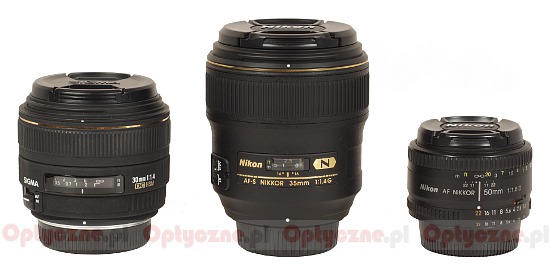 |
Please Support UsIf you enjoy our reviews and articles, and you want us to continue our work please, support our website by donating through PayPal. The funds are going to be used for paying our editorial team, renting servers, and equipping our testing studio; only that way we will be able to continue providing you interesting content for free. |
- - - - - - - - - - - - - - - - - - - - - - - - - - - - - - - - - - - - - - - - - - - - - - - -
The lens starts with a metal bayonet mount inside which you can find a rear element, less than 2.5 cm in diameter. What’s interesting the element changes its position during focusing – it is on the same level as contacts at infinity and it hides about 1 centimeter deep when we pass to the minimum focus. The hidden element reveals inner parts of the lens so we can examine some electronics, situated there as well. However, it also means you should forget about the lens being fully sealed …
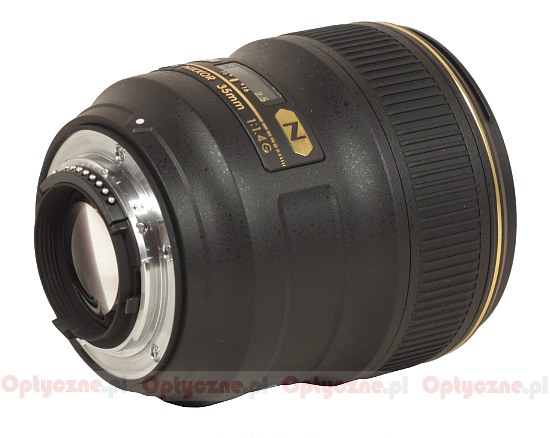 |
On the barrel, immediately behind the mount, there is a plate with the name and parameters of the lens and a capital „N”, meaning Nano Crystal coatings have been used. Inside the plate you can find a window with a distance scale, expressed in meters and feet, and right below it – depth of field markings by f/16 aperture. On the left there is a focusing mechanism mode switch (M/A-M) and on the other side of the lens – information about the diameter of filters and the inscription “Made in Japan”.
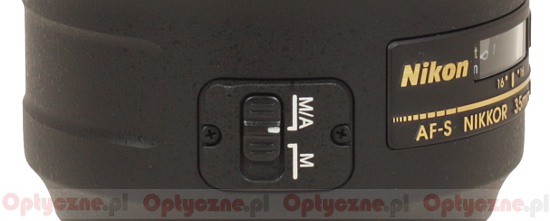 |
In the next part of the lens you can find a ribbed manual focus ring, 23 mm wide. It works smoothly and is well-damped allowing you very precise settings. Running through the whole scale you must turn it through 120 degrees.
At the front of the lens there is an immobile front element with a diameter of almost 5 cm. It is surrounded by a non-rotating filter thread, 67 mm in diameter, and a hood thread as well.
When it comes to the optical construction the Nikkor 1.4/35 consists of 10 elements positioned in 7 groups. The producer didn’t decide to use low-dispersion glass. One of elements is aspherical. A circular aperture has nine diaphragm blades and it can be closed down to f/16 maximum.
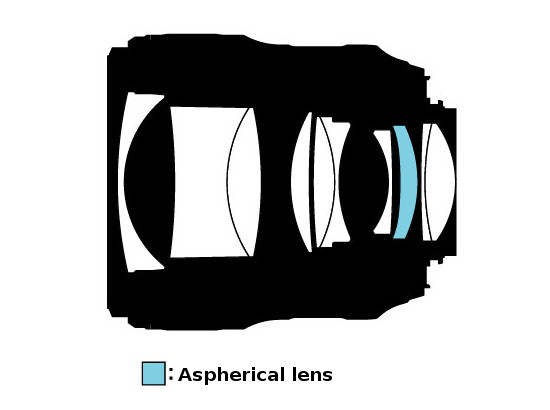 |
The small number of element is a bit surprising here. The Canon and the Zeiss feature 11 of them so one more. The much cheaper Samyang 1.4/35, which is being launched on the market, boast as many as 12 optical elements. Only the old Sony construction (adopted from the Minolta system) also has 10 elements but it fared very badly in our tests.
The buyer gets both caps, a petal-type lens hood and a soft pouch included in box.
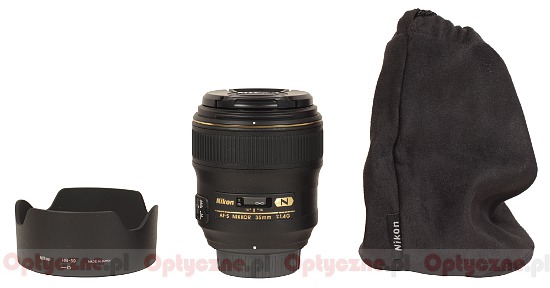 |






